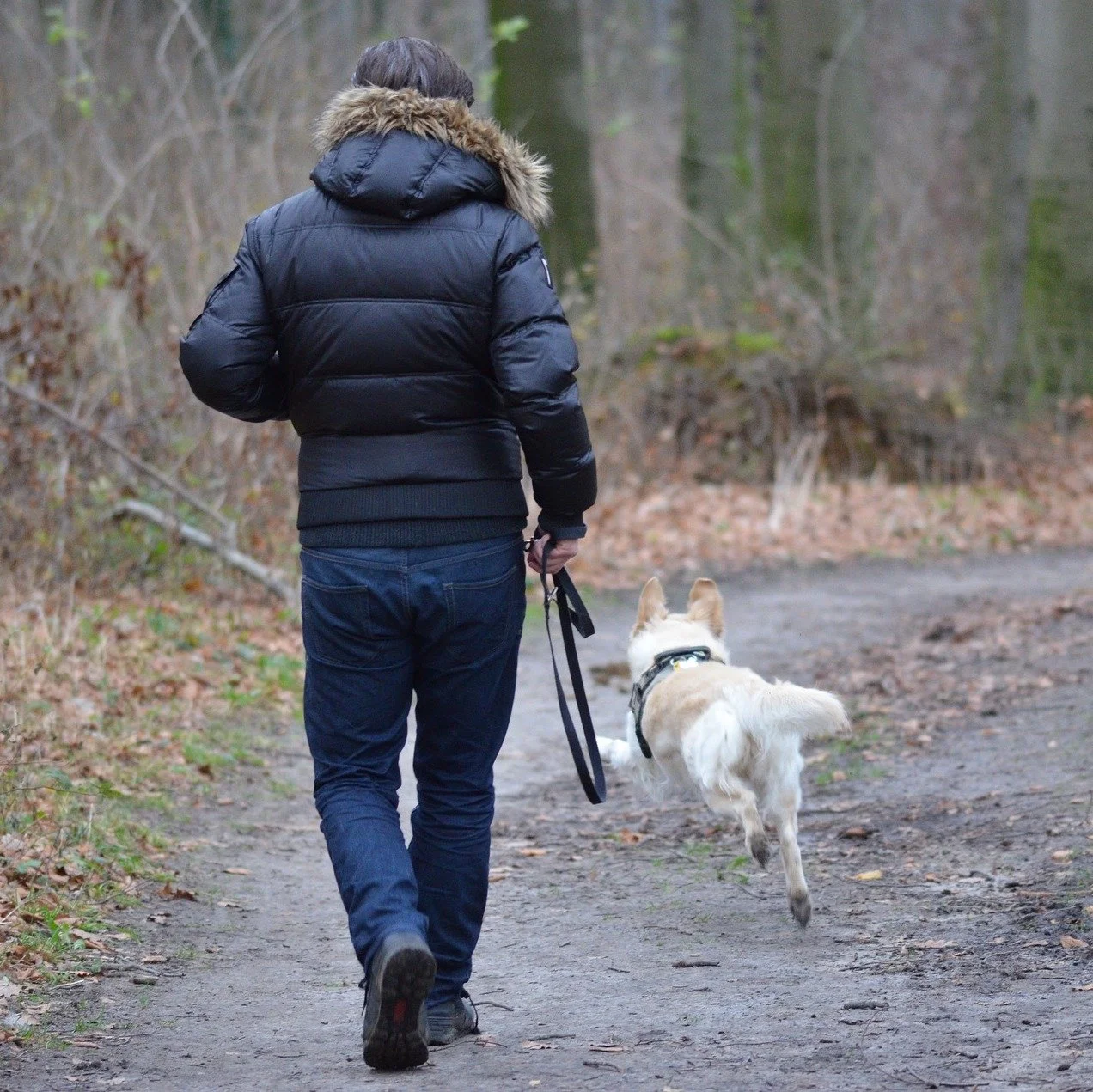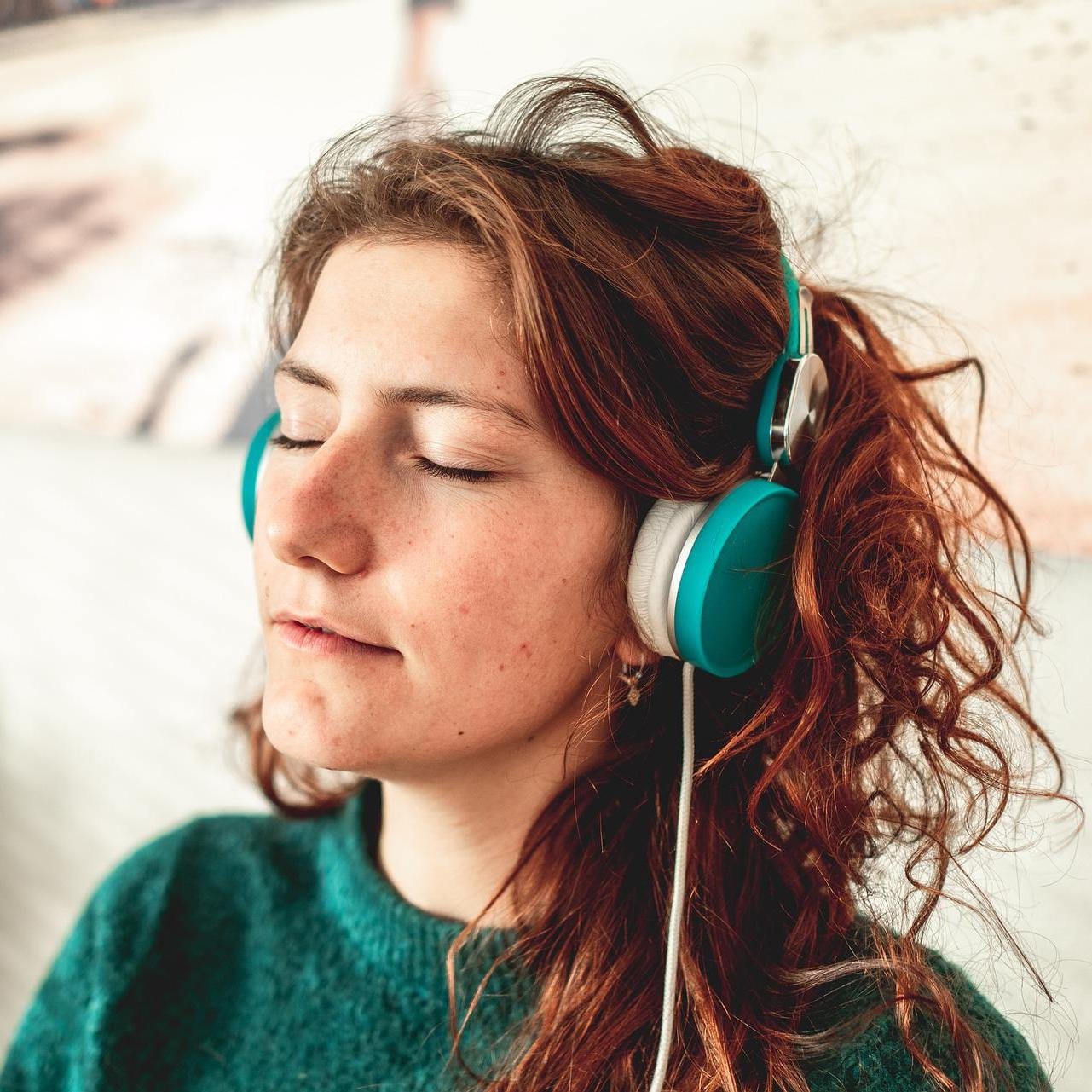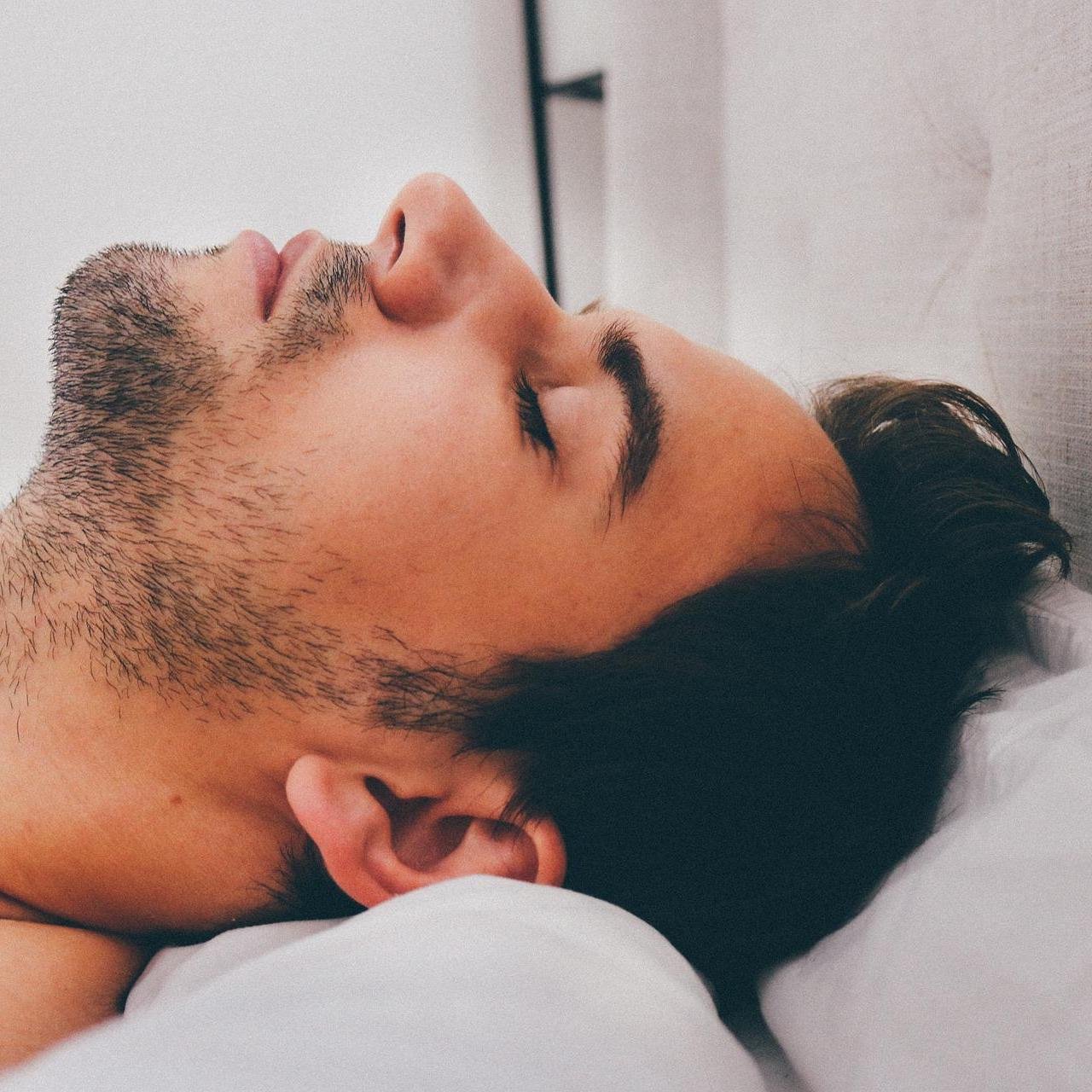Exercises To Calm Your Anxious Thoughts
Anxiety is a normal part of life.
Anxiety or anticipatory stress (e.g., fear of failing an examination, scared of not getting a promotion if not working hard enough, phobia, etc.) is your brain’s alarm system helping you to identify things in your environment that you feel may pose a risk to our life (danger, feeling unsafe) and well-being (unwanted emotions).
Remember that your thoughts lead to emotions and emotions are intrinsically linked to behaviour.
Anxiety should not interfere with your daily life or even impact your quality of life. If it does, then it may be time to take action and prevent your thoughts from getting out of control and leading to poor behaviour (bad diet, sedentary lifestyle, addictions). When experiencing moments of anxiety, feeling scared or panicked, the following exercises can help quiet the alarm, help you calm down quickly and be present and focused on yourself and your needs.
Trying to face your fears to deal with your anxiety can be difficult and may make you feel worse at first, but facing up to how anxiety makes you feel can be the first step in breaking the cycle of fear and insecurity.
During the exercise, your mind may naturally wander during the process. Acknowledge the thought and discard it gently. Bring your attention back to the exercise and keep at it. This is not the time to think about what you will cook for dinner or those unread work emails, or what you did or didn’t do 10 years ago.
Simple exercises to calm your anxious thoughts
Take a Break
To help you cope with the demands of life and prevent stress leading to anxiety or full-blown panic attacks, marking pauses, adding me-time to your busy schedule and breaking your routine may help you refocus on yourself and your needs.
This is the time to be selfish.
How can you care for others if you can’t care for yourself.
Active Relaxation
The stress response (also referred to as the “fight-or-flight” response) is responsible for causing the extreme reactions that typically outweigh any actual threat in the environment, leading to physiological symptoms (e.g., accelerated breathing rate, elevated blood pressure, increased sweating).
Relaxation techniques have been found to have the opposite effect on the body by targeting the vagus nerve, lowering heart rate, reducing bodily tensions, decreasing negative thoughts, and acting on your self-esteem and problem-solving skills.
Relaxation techniques can be even more effective when included with your overall wellness and self-care practices. Self-care strategies consist of activities that enhance your health, including the emotional, physical, spiritual, and relational aspects of your personal wellness. Focusing on sleep and the foundation of your beliefs are also integral parts of self-care practices.
Try meditation and yoga if you haven’t done so already. These relaxation techniques can be practised upon waking to set the tone for the day and help reduce your morning anxiety (especially if you suffer from sleep disorders) and start the day feeling refreshed. They can also be used at the end of the day to help you let go of any built-up stress and tension. Journaling is also a great tool to add to your self-care routine..
Morning guided meditation
5-minute SOS Meditation loss, grief, sadness
Evening guided meditation
5-minute SOS Meditation frustration, disappointment, or made a mistake
Focus on your Breathing
When you’re feeling anxious, you might notice that your heart rate and breathing get a bit faster. You may also begin to sweat and feel dizzy or lightheaded. When you’re anxious, getting your breathing under control can relax both your body and mind and help you control your racing thoughts.
Mindfulness, the art of living in the moment, seeks to bring you fully into the present by engaging all of your senses. We forget to be mindful, live in the present because so much of our time is spent focusing on the past or the future. We look at our mistakes and fear the future, the uncertainty. Worse, we simply go about our busy lives without thinking about our needs, missing out on all the experiences, and simply missing out on living.
The good thing is mindfulness can be practiced anywhere and applied to any activity. I always recommend my clients to be mindful as they wake up, to gauge how they are feeling and to set the tone for the day ahead. Then before every meal, allowing for the mind and body to go from a state of hyperactivity to a more relaxed state — a required state to digest and assimilate the nutrients from the food they are about to eat. Concentrate on how you feel; your environment. Being mindful also includes chewing each mouthful thoroughly; paying attention to the texture, the taste, and the goodness that will feed your every cell. By being more aware and observing things in real time, you can calm the part of the logical mind fixated on what comes next. Inevitably, this will help you appreciate things more and reduces your levels of stress and worry. It requires practice, but the more you do it the more thankful to yourself you will become.
Steps to follow to get your breathing under control when you’re anxious:
Loosen any clothing that could restrict breathing and sit in a quiet and comfortable place. You can rest your hands on your knees, with palms upwards, or you can put one hand on your chest and the other on your stomach. This allows you to be more in tune with your breathing and the movement of your stomach and chest as you breathe in and exhale. Your feet should be flat on the ground.
Take a slow and regular breath in through your nose, allowing the breath to flow deeply into the belly without force. Watch and sense your hands as you breathe in. You may notice that the hand on your chest remains still while the hand on your stomach moves slightly with every breath.
Breathe out through your mouth slowly without pausing or holding your breath, all the while counting to five or seven.
Repeat this process at least 10 times or until you begin to feel less anxious and your blood pressure and breathing rate have returned to normal.
Repeat the exercise as often as needed.
The above steps can be done while standing, sitting, or lying down, depending on your environment. If lying down, place the arms slightly away from the sides with the palms facing up. Position the legs comfortably.
4-7-8 Breathing
Counting can give you something to focus on outside of your anxious thoughts. If you notice that you are breathing too quickly following the above steps, you can use 4-7-8 breathing to slow down and reduce hyperventilation.
While sitting or lying down comfortably, place one hand on your stomach and one on your chest.
Breathe in deeply through your nose, expanding your stomach, for a count of four. Observe how the hand on your stomach move with every breath, while the hand on your chest remains still.
Hold your breath for a count of seven.
Breath out through your mouth for a count of eight, focusing on completely emptying your lungs.
Repeat until you feel calm.
If you feel it is too difficult to count this way, then use box breathing.
While sitting or lying down comfortably:
Breathe in deeply through your nose for a count of 3 (up to 5).
Hold your breath for a count of 3 (up to 5).
Breath out slowly through your mouth for a count of 3 (up to 5), focusing on completely emptying your lungs.
Hold your breath for a count of 3 (up to 5).
Repeat (for as long and as often as needed).
Spend Time in Nature
An overwhelming body of research has demonstrated that being part of nature and spending more time outdoors have therapeutic effects, both on your physical and mental well-being. Indeed, being disconnected from nature has been the turning point in human history, reducing our resilience and leading to a tsunami of disorders, all of which are preventable.
Spend more time in nature, bathing in sunlight, and maximise your stores of feel-good hormones and immune-supporting vitamin D. Having a pet has also been shown to help with anxiety, giving you a sense of purpose and helping you spend more time outdoors. Take your dog for long walks in the park/forest or go trekking on the hill, breathing deeply as you reach the top.
Listen to music
Listening to your favourite music can help you forget your anxious thoughts. Humming or singing is also great to help you be more present.
Singing out loud the lyrics that best reflect the way you feel inside is an invaluable exercise to let your pain and anxious thoughts out of you chest. Be as loud and meaningful as you can be if you are in a safe place.
Visualisation
Have you ever heard “find your happy place”?
Visualisation is a powerful way to let go of stress and anxious thoughts. Through visualisation, you use your imagination to picture yourself in a more calming and serene environment, such as at a beach or in a flower-covered garden. Visualization works to relax your body and take back control of your thoughts. By simply seeing yourself in a peaceful setting, you can actually allow your mind and body to feel as though you were there.
Drawing a mental picture of a place that makes you feel relaxed and happy can calm your brain and resolve body tension.
When you start to feel anxious, sit in a quiet and comfortable place.
Think of your ideal place to relax. While it can be any place in the world, real or imaginary, it should be an image that you find very calming, happy, peaceful, and safe. A place you can easily return to when needed.
Think of the whole picture, then the most minute details, as if you were there. Think about how the place would smell, feel, taste and sound. Envision yourself in that place, how the wind/sun feels on your skin, the sand under your feet (if you choose an exotic beach), the smell of the flowers surrounding you in the beautiful garden, and the taste of ripe exotic fruits.
Once you have you have found your “happy place,” close your eyes and take slow and regular breaths through your nose and out of your mouth. Be mindful of your breathing and continue focusing on your happy place until you feel your anxiety lifting.
Visit this place in your mind whenever you feel the need.
Progressive Muscle Relaxation (PMR)
Anxiety often manifests itself physically in our bodies in the way of muscle tension. When you begin to experience anxiety, your body can tense up without you even realising it. Naturally, this rings the alarm bell, activating the vagus nerve and signalling your brain that something is not quite right. Your brain then perceives the tension and ignites the stress response by activating the release of stress hormones, creating a vicious cycle.
Progressive muscle relaxation (PMR) is an effective anxiety-reducing technique that involves decreasing the tension throughout your body while calming any anxious thoughts. The aim is to focus on each muscle in the body and help your brain recognise what it feels like for your muscles to be in a relaxed, tension-free state. This will then remove body tension and then address your anxious or racing thoughts and, therefore, calm your mind.
Get comfortable in a seated position. You may also lie on your back, either on the floor or your bed if it helps, as long as it feels comfortable.
Starting at the tips of your toes and working your way up your calf and thighs, breathe in and tense/stretch each major muscle group for a count of 10 seconds.
Breathe out and quickly relax the muscle group.
Relax for a count of 10 seconds (or up to 20 seconds) before repeating the process and moving onto the next muscle group.
Focus on the muscle of your arms, your shoulders, your stomach, your chest, your neck, and the muscles of your face, breathing in and tensing each muscle, then breathing out and releasing each muscle in turn for 10 or 20 seconds.
When you have identified all the tensions in your body and worked and relaxed each muscle, and feel more relaxed and calm, count backward from 5 to 1 and focus on the present.
Extraordinarily, fears and anxiety fueled by those orchestrated past events can be easily challenged with PMR, helping you to feel a greater sense of calm and sleep more deeply. A 2021 study found that progressive muscle relaxation can significantly reduce anxiety levels and sleep quality in individuals with COVID-19. Fears associated with the disease can also be easily resolved with PMR.[1]
Butterfly Hug
If you have never heard of it, I will have to agree that this one sounds like a weird one. But, it is nothing but. The butterfly hug is a form of bilateral stimulation that can be used as a simple and effective grounding technique to help relax and calm a hyperaroused self. A form of Eye Movement Desensitization and Reprocessing (EMDR), the butterfly hug is a structured therapy that encourages you to briefly focus on a traumatic experience or ongoing stress or anxiety.
The Butterfly Hug was developed by two practitioners, Lucina Artigas and Ignacio Jarero and was taught to survivors of hurricane Pauline in Mexico (1998), which demonstrated to be highly effective for helping those during this incredibly devastating time. Following the successful implementation and use, many therapists are now recommending the butterfly hug the world around, primarily to those who have suffered traumas.
The tapping helps soothe the vagus nerve, directly impacting the central nervous system and the stress response.
Do the following with eyes open or partially closed, not totally closed, standing or sitting in a chair:
Focus on your breathing. Breathe in deeply, making sure your chest rises.
Draw your awareness inwards. Notice any thoughts and emotions that are coming up, and how you feel. Continue breathing.
Cross your hands over your chest (like you are making a bird shadow puppet) where the wings are resting just below your collar bone. Locking your thumbs together can help you feel anchored, so that your hands pivot as if they were wings and the thumbs the head.
Begin slowly tapping your fingers to your rib cage, alternating left then right, like the flapping wings of a butterfly. Again, alternating left, right, left, right at your own steady pace, as if you are soothing a loved one. Feel the vibration of the tap.
Continue tapping until you feel calmer and grounded. You can breathe slowly and deeply (abdominal breathing), while you take note of your thoughts, the images, sounds, odours that you may experience, as well as the feelings, and physical sensations, without judging, changing or pushing your thoughts away.
Tapping (EFT) or psychological acupressure
Like the butterfly hug, tapping has been clinically proven to help manage stress, improve anxiety and even PTSD.
Similar to acupuncture, EFT focuses on the meridian points to restore balance to your body’s energy. Based on Chinese medicine, meridian points are areas of the body where energy flows through. Any energetic imbalance can influence disease or sickness.
While acupuncture uses needles to apply pressure to these energy points. EFT uses fingertip tapping.
To successfully use the meridians, follow online video tutorials.
Time to Energise and increase your resilience
References
Hayes-skelton, SA. et al. (2013). D. A contemporary view of applied relaxation for generalized anxiety disorder. Cognitive Behaviour Theraoy. 42(4), pp. 292-302. doi:10.1080/16506073.2013.777106
Cleveland Clinic. Agoraphobia. May 8, 2015.
Gerritsen, RJS. Band, GPH. (2018). Breath of Life: The Respiratory Vagal Stimulation Model of Contemplative Activity. Front Hum Neurosci. 12, 397. doi:10.3389/fnhum.2018.00397
Telles, S. et al. (2017). Hemisphere specific EEG related to alternate nostril yoga breathing. BMC Res Notes. 10(1), 306. doi:10.1186/s13104-017-2625-6
Bhimani, NT. et al. (2011). Effect of Pranayama on stress and cardiovascular autonomic function. Indian J Physiol Pharmacol. 2011;55(4):370-7.
Nguyen J, Brymer E. Nature-Based Guided Imagery as an Intervention for State Anxiety. Front Psychol. 2018;9:1858. doi:10.3389/fpsyg.2018.01858
Li Y. et al. (2015). Progressive muscle relaxation improves anxiety and depression of pulmonary arterial hypertension patients. Evid Based Complement Alternat Med. 2015:792895. doi:10.1155/2015/792895
Woodyard C. (2011). Exploring the therapeutic effects of yoga and its ability to increase quality of life. Int J Yoga. 4(2), pp. 49-54. doi:10.4103/0973-6131.85485
Aduriz, ME. Knopfler, C. Bluthgen, C. (2009). Helping child flood victims using group EMDR intervention in Argentina: Treatment outcome and gender differences. International Journal of Stress Management. 16(2), pp. 138-153.
Jarero, I. Artigas, L. (2009). EMDR Integrative Group Treatment Protocol. Journal of EMDR Practice & Research. 3(4), pp. 287-288.
Jarero, I. Artigas, L. (2010). The EMDR Integrative Group Treatment Protocol: Application with adults during ongoing geopolitical crisis. Journal of EMDR Practice and Research. 4(4), pp. 148-155.
Jarero, I. Uribe, S. (2014). Worst case scenarios in recent trauma response. In M. Luber (Ed). Implementing EMDR early mental health interventions for man-made and natural disasters: Models, scripted protocols, and summary sheets. Springer.
Jarero, I. Artigas, L. Hartung, J. (2006). EMDR integrative group treatment protocol: A postdisaster trauma intervention for children & adults. Traumatology. 12, pp. 121-129.
Jarero, I. Artigas, L. Luber, M. (2011). The EMDR protocol for recent critical incidents: Application in a disaster mental health continuum of care context. Journal of EMDR Practice and Research. 5(3), pp. 82-94.
Jarero, I. Artigas, L. Montero, M. (2008). The EMDR integrative group treatment protocol: Application with child victims of mass disaster. Journal of EMDR Practice and Research. 2, pp. 97-105.
Laub, B. Bar-Sade, E. (2009). The Imma EMDR Group Protocol. In M. Luber (Ed.) Eye Movement desensitization and reprocessing (EMDR) scripted protocols: Basic and Special Situations (p.292.). New York. Springer.
Maxfield, L. et al. (2008). A working memory explanation for the effects of eye movements in EMDR. Journal of EMDR Practice and Research. 2(4), pp. 247-261.
Melville, A. (April 2003). Psychosocial Interventions: Evaluation of UNICEF supported projects (1999-2001). UNICEF Indonesia: Shapiro, F. (2001). EMDR Basic Principles, Protocols, and Procedures. Second Edition. New York: Guilford Press.
Zaghrout-Hodali, M. Alissa, F. Dodgson, P. (2008). Building resilience and dismantling fear: EMDR group protocol with children in an area of ongoing trauma. Journal of EMDR Practice and Research, 2, 106.
1. Özlü, İ. et al. (2021). The effects of progressive muscle relaxation exercises on the anxiety and sleep quality of patients with COVID-19: A randomized controlled study. Perspectives in psychiatric care. 57(4), pp. 1791–1797. doi:10.1111/ppc.12750










